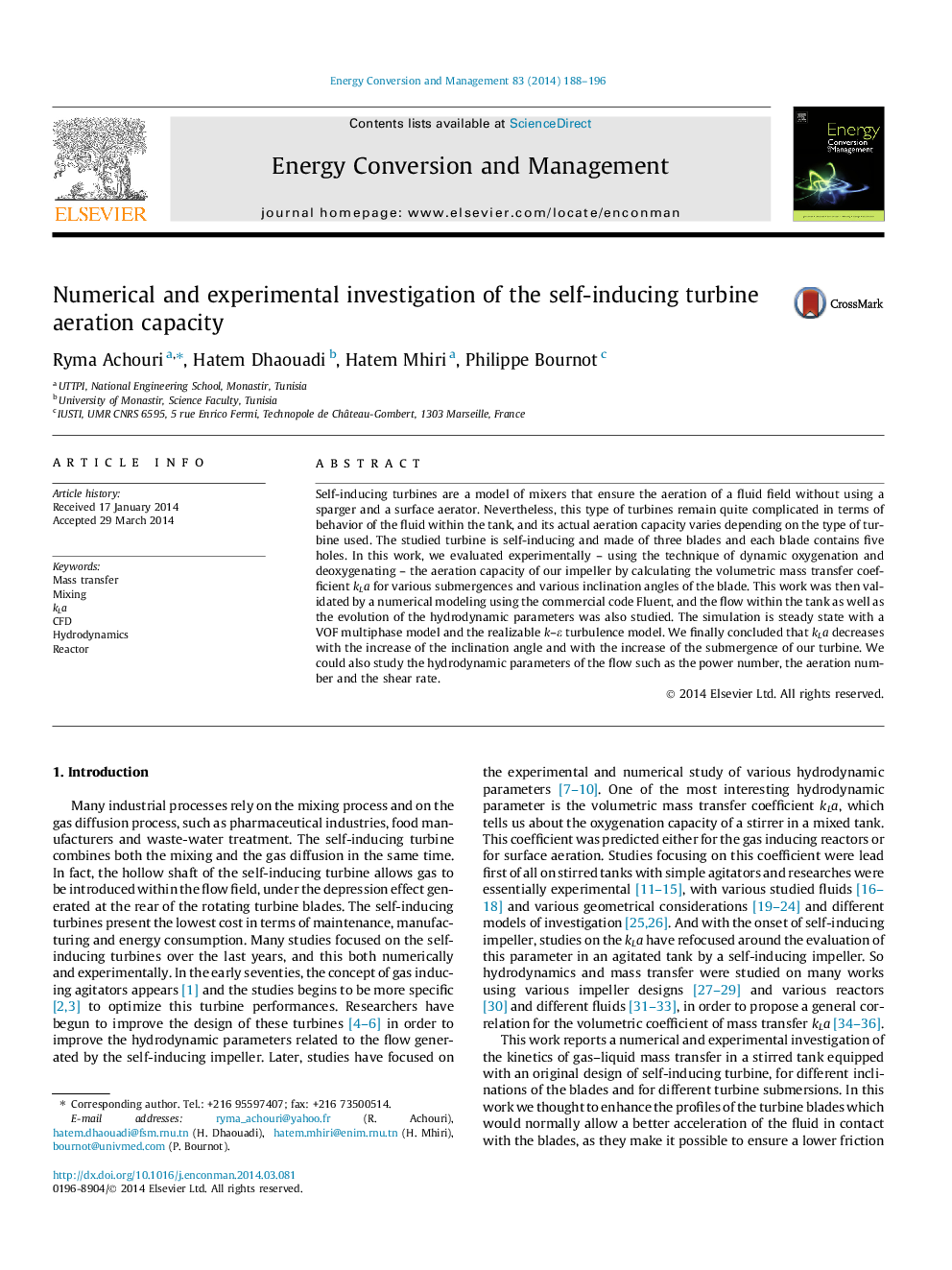| Article ID | Journal | Published Year | Pages | File Type |
|---|---|---|---|---|
| 7164877 | Energy Conversion and Management | 2014 | 9 Pages |
Abstract
Self-inducing turbines are a model of mixers that ensure the aeration of a fluid field without using a sparger and a surface aerator. Nevertheless, this type of turbines remain quite complicated in terms of behavior of the fluid within the tank, and its actual aeration capacity varies depending on the type of turbine used. The studied turbine is self-inducing and made of three blades and each blade contains five holes. In this work, we evaluated experimentally - using the technique of dynamic oxygenation and deoxygenating - the aeration capacity of our impeller by calculating the volumetric mass transfer coefficient kLa for various submergences and various inclination angles of the blade. This work was then validated by a numerical modeling using the commercial code Fluent, and the flow within the tank as well as the evolution of the hydrodynamic parameters was also studied. The simulation is steady state with a VOF multiphase model and the realizable k-ε turbulence model. We finally concluded that kLa decreases with the increase of the inclination angle and with the increase of the submergence of our turbine. We could also study the hydrodynamic parameters of the flow such as the power number, the aeration number and the shear rate.
Related Topics
Physical Sciences and Engineering
Energy
Energy (General)
Authors
Ryma Achouri, Hatem Dhaouadi, Hatem Mhiri, Philippe Bournot,
